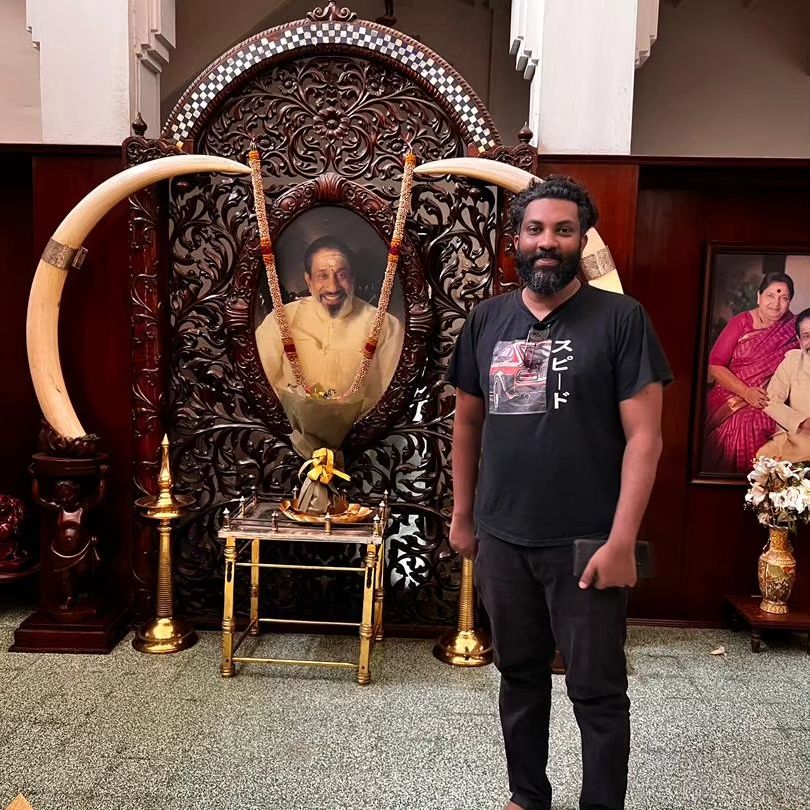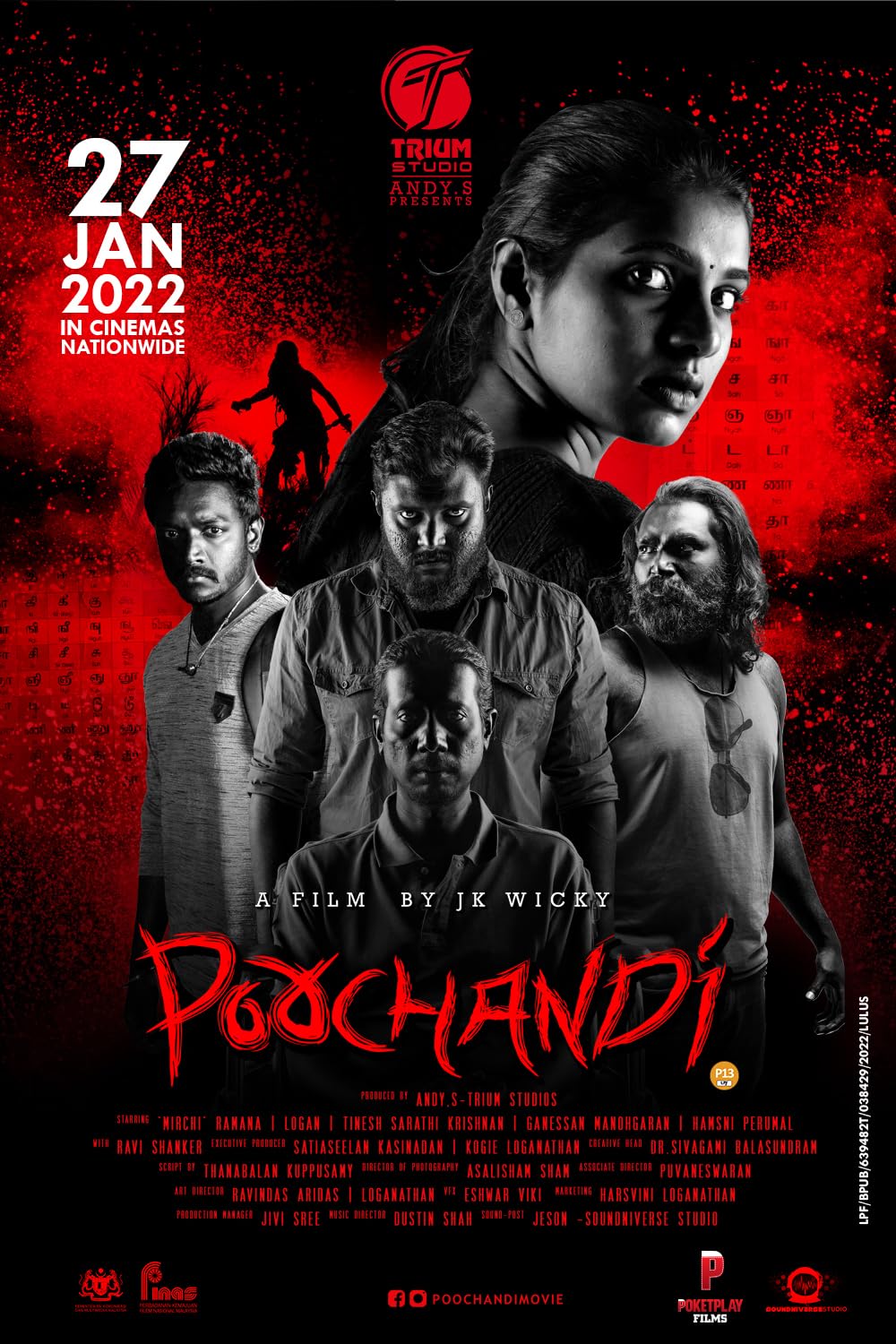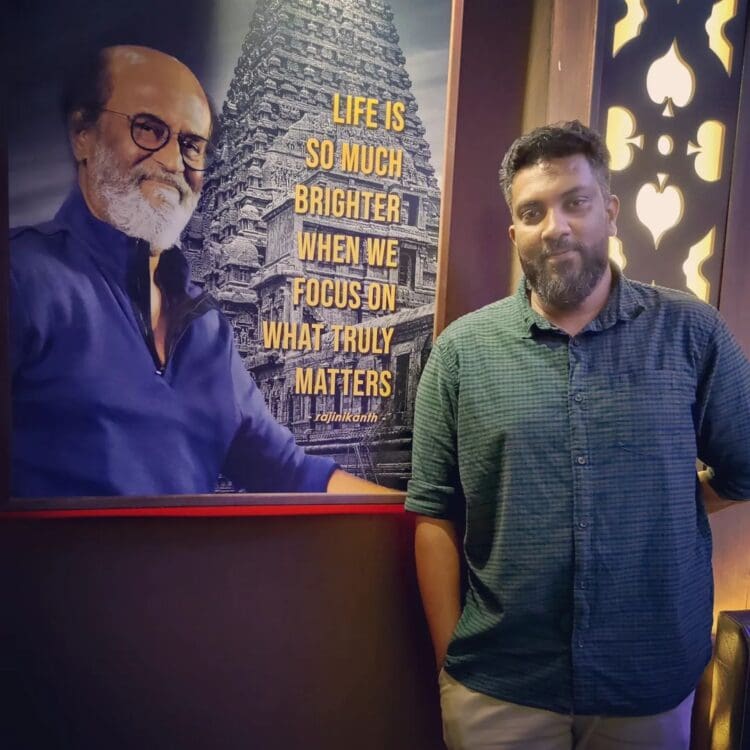Cinema serves as a primary source of entertainment for Malaysians, providing a valuable means to unwind and relax the mind. For the Indian community, in particular, movies hold a special place. Notably, numerous Kollywood films have achieved significant box office success in the country, reflecting a dedicated and sizable fan base that revels in the joy of movies, songs, and concerts. The reception of Kollywood movies, featuring renowned actors, is nothing short of a grand celebration in Malaysia. Fans eagerly anticipate the release dates of their favorite actors’ films, marking these occasions as special moments of entertainment. However, Malaysians tend to exhibit more interest and focus on Kollywood films compared to our own local Tamil films featuring homegrown stars.
The Malaysian Tamil cinema industry has undergone significant development. In the past, Malaysian Tamil films were often criticized for being dull, with artists lacking the skills to deliver convincing performances, and various other shortcomings. However, over time, substantial changes have taken place. There has been remarkable improvement in our local films, with notable advancements in direction, acting, music composition, and various other aspects. Films released in recent years reflect a commendable standard in these areas, marking a positive transformation in the Malaysian Tamil cinema landscape.

JK Wicky stands out as a well-known and highly talented director in the Malaysian Tamil cinema industry. His directorial debut in theatrical films was marked by the release of “Poochandi,” a horror thriller that hit the screens in 2022. This cinematic endeavor quickly became a phenomenon within the Malaysian Tamil Cinema landscape, leaving an indelible mark on audiences and the industry alike.

“Poochandi” not only garnered widespread attention but also received an overwhelmingly positive response, establishing itself as a blockbuster hit. The film’s success was so profound that it transcended national borders, prompting an expansion of its theatrical release to Tamil Nadu. This international recognition added a significant milestone to the Malaysian Tamil cinema industry, bringing its unique storytelling and filmmaking prowess to a broader audience. The acclaim and success of “Poochandi” can be attributed to several factors, including JK Wicky’s directorial finesse and the film’s innovative approach to the horror thriller genre. The movie managed to captivate audiences with its compelling narrative, skillful cinematography, and gripping performances from the cast. The positive reception not only elevated JK Wicky’s status as a director but also contributed to the overall reputation of Malaysian Tamil cinema. This cinematic achievement showcased the potential of the Malaysian Tamil film industry to produce content that resonates beyond its borders. The interview with JK Wicky provides valuable insights into his creative process, experiences, and the trajectory of Malaysian Tamil cinema.
1.JK Wicky – in 3 words.
Inspiring, Creative, rebellious

2. What marketing strategy did you deploy to promote ‘Poochandi,’ which won the “Best Movie” at the MICA Awards?
Many individuals believe that promoting films on social media is key to attracting audiences, but I hold a different perspective. I’ve observed instances where movies featuring popular artists with substantial social media followings did not necessarily translate into a successful theatrical run. Thus, it’s rare for our social media efforts to directly correlate with gathering a substantial audience for a movie. In my opinion, focusing on ground-level marketing yields better results.
This was precisely the approach we adopted to promote “Poochandi,” especially after facing delays due to the COVID-19 pandemic. During this period, we utilized our time to organize events centered around the movie’s theme. These events served as platforms to disseminate information about the film and showcase its trailer directly to the audience. We believed that this approach provided viewers with a visual representation of the movie, making it more tangible and engaging than merely encountering promotional content on social media.
Generally, when people encounter something new on social media, they are less inclined to invest the time to actively search for it on YouTube and watch it unless it is something they are already familiar with or holds personal significance as a favorite. Since “Poochandi” was something new, so we took the initiative to familiarize audiences with it through events. By doing so, we ensured that the movie’s title at least reached the Indian community in the country. Whether or not they chose to watch the movie was entirely up to them. We aimed for indirect marketing, refraining from pressuring individuals to support the film or watch it. Ultimately, this grassroots marketing approach laid the foundation for garnering an audience for “Poochandi.”

3. How do you perceive the development of the Malaysian Tamil cinema industry in comparison to earlier years?
Looking back at the history of the Malaysian Tamil cinema, “Naan Oru Malaysian” the first Malaysian Tamil film which was entirely shot in Malaysia was released in 1991, a production that incurred substantial costs due to the use of film reels. Following its release, however, the industry experienced a prolonged hiatus, leading to a decline. Subsequently, the advent of digital cinema marked a turning point. Malaysian Tamil movies gradually made a comeback, with a few releases starting from the year 2001. Notably, in 2006, the industry witnessed the introduction of “Chenman Chaalai,” an art film characterized by a deliberate pacing. This movie is considered one of the earliest ventures into the modern era of Malaysian Tamil cinema. Despite “Chenman Chaalai” receiving a lukewarm response, it garnered appreciation for its innovative attempt to explore new dimensions within the Malaysian Tamil film landscape.
Following the DVD era, where individuals had the capability to produce movies on DVDs for sale, a surge in film production occurred during this period. However, the majority of these films did not face the challenge of theatrical releases. It was only later, with movies like “Maindhan” and “Vedigundu Pasangge,” that significant benchmarks were set for theatrical films, earning spots on the list of highest theatrical collections. The unexpected journey from humble beginnings to such heights marked a notable evolution in the industry.
The advent of digital cinema further catalyzed progress in the frequency of theatrical movie releases. However, the challenge lies in the uncertainty surrounding audience turnout and box office collections for each film, despite the increased production of movies. Nevertheless, there is a belief that, by continuing on this trajectory, the Malaysian Tamil cinema industry could produce more commercially successful movies that triumph in box office collections.

The Malaysian Tamil film industry has witnessed significant development over the years, with artists displaying a dedicated commitment to honing their craft and contributing their best to the community. The evolution of Malaysian Tamil cinema reflects the collective efforts of these passionate individuals who strive to elevate the industry. As more people begin to explore and watch local films, the diligent efforts of these artists become increasingly noticeable. These dedicated individuals not only work to enhance their skills but also actively contribute to the cultural richness of the community through their artistic endeavors. Their commitment to delivering quality content, coupled with a desire to resonate with the local audience, has played a pivotal role in shaping the growth and recognition of Malaysian Tamil films.
The key lies in encouraging audiences to embrace and support local cinema. As viewers engage with more Malaysian Tamil films, they become instrumental in acknowledging and appreciating the efforts invested by artists. This recognition, in turn, fuels the motivation of filmmakers and artists to continue pushing boundaries, exploring new themes, and contributing to the ongoing evolution of Malaysian Tamil cinema.
4. Local movies are given a 4-day window, and if a movie fails to attract audiences within that time frame, it will be removed from theaters. Is this challenging for Malaysian Tamil films?
When it comes to screenings, numerous movies are presented to provide people with the opportunity to explore a diverse range of films. However, our perception is that when a Malaysian Tamil film is released, it tends to be on a smaller scale, necessitating more time to reach and attract audiences to theaters. Consequently, we anticipate theaters to extend the screening duration, even in the face of a modest turnout. This poses a financial challenge for theaters.
In Tamil Nadu, movies draw full houses even for early morning screenings at 4 am, reflecting a cultivated sense of anticipation and excitement. For Malaysian filmmakers, generating a similar level of anticipation for their films proves to be a formidable task. Creating a buzz and generating anticipation among audiences to watch films on the first day, first show is a significant challenge. Unlike in Tamil Nadu, where the audience is primed ahead of the release, Malaysian filmmakers often struggle to instill this sense of anticipation.
Success for Malaysian films typically hinges on word of mouth or a scenario where no other movies are concurrently screening in theaters. The prevailing approach of relying solely on these factors is not consistently effective. Hence, there is a crucial need to proactively prepare the audience before the movie release. We have been provided with better opportunities in Malaysia. The mandatory four-day window provided by FINAS (National Film Development Corporation Malaysia) is a positive measure not observed in other countries, offering a unique advantage in promoting Malaysian Tamil films.
In recent times, numerous local films have struggled to draw audiences and achieve successful theatrical runs despite substantial efforts invested in their production. It is evident that, moving forward, a pivotal shift towards prioritizing and investing in pre-release marketing strategies is essential. While considerable resources and dedication are put into the filmmaking process, the challenge lies in connecting with the audience and generating anticipation before a movie hits theaters.
5. What’s your take to cultivate the interest of audiences to watch Malaysian Tamil movies?
Malaysian filmmakers are confronted with the challenge of not merely replicating the style and themes commonly found in Kollywood Tamil movies. Given the widespread popularity and familiarity of Kollywood films among the audience, creating content that mirrors or closely resembles these movies would likely blur the lines between the two industries. To cultivate a thriving Malaysian Tamil film industry, it becomes imperative for filmmakers to carve out a unique identity.
This unique identity involves showcasing elements that distinctly characterize Malaysian Tamil films, setting them apart as a separate and noteworthy entity. It could encompass various aspects, including storytelling techniques, cultural nuances, regional influences, and even thematic explorations specific to Malaysia. By infusing these distinctive elements, filmmakers can create an identity that not only resonates with the local audience but also intrigues and captivates viewers, offering them something different from what they are accustomed to in Kollywood. The goal is to encourage audiences to explore and appreciate the differences in Malaysian Tamil films, fostering a sense of pride and ownership within the local community.
In his perspective, JK Wicky gives importance to the enhancement in the quality of the Malaysian Tamil films and serve with a fresh perspective which is related to Malaysians. This approach not only sets the stage for the industry’s growth but also ensures that Malaysian Tamil cinema stands on its own merits, contributing to the broader diversity of global cinema. In essence, the endeavor is to build a cinematic identity that reflects the unique cultural tapestry and storytelling potential of Malaysia.

6. How does it feel to have Poochandi win 7 prestigious awards at MICA and why do you think this kind of recognition is important for artists?
Our film, “Poochandi,” received nominations in numerous categories at MICA, and we were honored to secure victories in seven of them. This accomplishment has served as a powerful motivator for our team, reigniting our drive to strive for excellence. Despite the two years that have passed since the release of “Poochandi,” the recent recognition has injected a renewed momentum, encouraging us to redouble our efforts.
Awards and recognition in the film industry are not merely accolades; they serve as crucial catalysts for artists. Winning in various categories provides a significant boost, inspiring artists to continue delivering their best work. Witnessing the next generation of filmmakers receiving such recognition is particularly gratifying, as it not only acknowledges their talent but also acts as a stepping stone for their ascent in the industry. I am genuinely glad that these accolades are helping young filmmakers elevate themselves within the industry, creating an environment where talent is celebrated and nurtured. Such recognition plays a pivotal role in shaping the future of the film industry, fostering a culture of excellence and innovation.
The journey of the Malaysian Tamil cinema industry has been marked by significant strides, transforming from its early years to a more vibrant and promising landscape. The evolution is evident in the improved quality of films, with notable advancements in direction, acting, and other critical aspects. Despite past criticisms, Malaysian Tamil films have found their footing, demonstrating commendable progress.
As the industry continues to evolve, the spotlight on seasoned directors like JK Wicky and the acknowledgment of emerging talents underscore the potential for Malaysian Tamil cinema to carve its niche on the global stage. The commitment to enhancing storytelling, addressing marketing challenges, and recognizing artistic contributions collectively pave the way for a promising future in Malaysian Tamil cinema. Through collaborative efforts, innovative strategies, and continued support, the Malaysian Tamil cinema industry stands poised for further growth, promising a rich tapestry of unique stories that resonate with audiences worldwide.
Watch the full video here:

Follow us on Instagram, Facebook or Telegram for more updates and breaking news.










